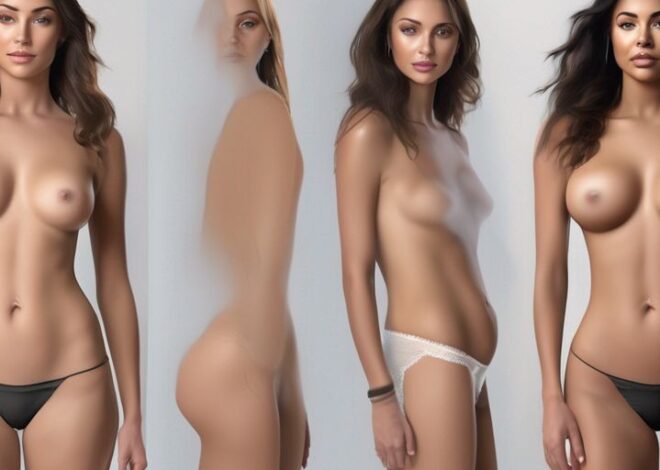
Exploring AI Undress Generator: Ethical Implications and How It Works
The AI undress generator, as exemplified by platforms like Nudify.Online, is a controversial technology that uses advanced AI to digitally remove clothing from images of people. This article delves into the workings, ethical implications, and societal impact of these generators, providing a comprehensive view of their current state and future potential.
Key Takeaways
- AI undress generators utilize sophisticated image processing and machine learning models to simulate the removal of clothing from digital images.
- These technologies raise significant ethical concerns, particularly regarding privacy, consent, and the potential for misuse.
- The societal impact of AI undress generators is profound, influencing social perceptions, online behavior, and potentially leading to long-term societal effects.
- Regulatory responses vary globally, with some regions implementing strict laws and others yet to address the specific challenges posed by this technology.
- Future advancements in AI undress technology continue to push ethical boundaries, necessitating ongoing discussions about regulation and the responsible development of AI.
Overview of AI Undress Generators

Definition and Functionality
AI undress generators are software tools that use artificial intelligence to digitally remove clothing from images of individuals. These tools are often web-based applications, such as Nudify.Online, which utilizes advanced clothes-removing AI technology to process images uploaded by users.
Technological Evolution
The evolution of AI undress technology has been rapid, with significant advancements in machine learning algorithms and image processing techniques. This progression has enabled more realistic and quicker image modifications, pushing the boundaries of what AI can achieve in the realm of digital content alteration.
Key Players in the Market
The market for AI undress generators features a variety of players, from startups to more established tech companies. These entities often compete on the accuracy and speed of their AI models, as well as the ethical measures they implement to prevent misuse.
How AI Undress Generators Work

Image Processing Techniques
AI undress generators utilize sophisticated image processing techniques to analyze and manipulate images. These techniques include segmentation, which isolates the subject from the background, and texture synthesis, which generates realistic skin textures where clothing was present. Key algorithms are employed to ensure the transitions are seamless and the output maintains a high degree of realism.
Machine Learning Models Used
The core of AI undress technology lies in its machine learning models. These models are trained on vast datasets of clothed and unclothed images to learn the nuances of human anatomy and clothing types. Common models used include convolutional neural networks (CNNs) and generative adversarial networks (GANs). The training process is crucial for the accuracy and effectiveness of the final output.
Integration with Web Applications
AI undress generators are often integrated into web applications, allowing users to upload photos and receive processed images. This integration involves robust API setups and secure data handling practices to protect user data. The ease of use of these applications raises concerns about potential misuse and abuse, as highlighted by instances where consent is superficially addressed.
Ethical Concerns with AI Undress Generators

Privacy Issues
Privacy concerns are paramount when discussing AI undress generators. These tools can strip individuals of their clothing in images without their consent, leading to potential privacy invasion. The technology can be misused to create images that the subjects never intended to be public, raising significant privacy issues.
Consent and Legal Implications
The use of AI undress technology often occurs without the explicit consent of the people depicted in the images. This lack of consent poses serious legal challenges, as current laws may not fully cover the specific scenarios created by these technologies. There is a pressing need for updated regulations that address the unique aspects of AI-generated content.
Potential Misuse and Abuse
The potential for misuse and abuse of AI undress generators is high. These applications can be used to create non-consensual pornography, harass individuals, or even blackmail. The ease of access to such technology increases the risk of its use in harmful ways, making it crucial to consider stringent measures to prevent abuse.
Impact on Society

Social Perceptions and Reactions
The introduction of AI undress generators has significantly altered public perception, often sparking intense debates about morality and privacy. The technology’s ability to manipulate images has led to a distrust in digital content, raising concerns about the authenticity of online media.
Influence on Online Behavior
AI undress technology has influenced online behavior, with an increase in the use of such tools for personal amusement or malicious intent. This shift has necessitated the development of more robust digital literacy programs to help users identify and understand manipulated content.
Long-term Societal Effects
The long-term effects of AI undress technology on society are still unfolding. However, potential impacts include changes in social norms regarding privacy and the human body, as well as the possible desensitization to digital violations of personal space.
Regulatory Landscape

Current Laws and Regulations
The regulatory framework surrounding AI undress technologies like Nudify.Online is complex and varies significantly across different jurisdictions. In many countries, the use of such technologies is governed by general privacy and data protection laws, rather than specific regulations targeting AI undress applications. Key legislation includes the General Data Protection Regulation (GDPR) in the European Union, which imposes strict guidelines on the processing of personal data.
Proposed Changes
As the technology advances and becomes more widespread, there are increasing calls for specific legal frameworks to manage these tools. Proposed changes often focus on enhancing user consent mechanisms, tightening data security requirements, and defining clearer boundaries for acceptable use.
Global Differences in Regulation
Regulatory approaches to AI undress technologies vary widely around the world:
- United States: Largely unregulated specific to AI undress, but covered under broader digital privacy laws.
- European Union: Strict data protection laws like GDPR apply.
- Asia: Varies significantly, with some countries having minimal regulations.
It is crucial for developers and users of technologies like Nudify.Online to stay informed about the regulatory changes and ensure compliance to avoid legal repercussions.
Technological Safeguards

AI Monitoring and Control
To ensure the safe and ethical use of AI undress technology, continuous monitoring and control mechanisms are crucial. These systems are designed to detect and mitigate any unethical use of the technology, ensuring compliance with both legal and moral standards.
User Verification Processes
Implementing robust user verification processes is essential to prevent unauthorized access and misuse of AI undress generators. This includes multi-factor authentication and strict user verification to ensure that only authorized personnel can use the technology.
Data Security Measures
Ensuring the security of data used by AI undress generators is paramount. Techniques such as encryption and secure data storage practices are employed to protect sensitive information from unauthorized access and breaches.
Future of AI Undress Technology

Advancements on the Horizon
The field of AI undress technology is poised for significant advancements, with researchers focusing on enhancing the accuracy and speed of these systems. Future developments are expected to leverage cutting-edge AI techniques, potentially integrating quantum computing elements to handle complex image processing tasks more efficiently.
Ethical AI Development
The development of ethical AI frameworks is crucial in guiding the use of AI undress technology. Efforts are underway to establish standards that ensure these technologies are developed and used in a manner that respects privacy and human dignity.
Predictions and Trends
The market for AI undress technology is anticipated to grow, influenced by increasing demand in entertainment and security sectors. However, public sentiment and regulatory changes will play critical roles in shaping the trajectory of this technology. Trends suggest a cautious but steady integration of these tools into various online platforms.
Conclusion
The exploration of AI undress generators like Nudify.Online reveals a complex interplay between technological innovation and ethical considerations. As these tools become more advanced, leveraging cutting-edge AI technology from 2024, they pose significant privacy and consent issues that cannot be ignored. It is crucial for developers, policymakers, and the public to engage in meaningful discussions about the implications of such technologies. Ensuring that there are robust ethical guidelines and regulations in place is essential to prevent misuse and protect individuals’ rights in the digital age.
Frequently Asked Questions
What is an AI Undress Generator?
An AI Undress Generator is a type of technology that uses artificial intelligence to digitally remove clothing from images of people, typically used in various online applications.
How does an AI Undress Generator work?
These generators employ complex image processing techniques and machine learning models to analyze and manipulate images, allowing them to simulate the appearance of individuals without clothes.
What are the ethical concerns associated with AI Undress Generators?
The primary ethical concerns include privacy violations, lack of consent from individuals depicted in the images, potential legal issues, and the misuse of technology for malicious purposes.
Are there any legal regulations governing the use of AI Undress Generators?
Yes, several countries have specific laws and regulations that address the use of such technologies, focusing on privacy, consent, and digital rights. However, the regulatory landscape varies significantly across different regions.
What can be done to prevent the misuse of AI Undress Generators?
Implementing stringent AI monitoring and control mechanisms, robust user verification processes, and strong data security measures are crucial to prevent misuse and ensure ethical usage of these technologies.
What is the future of AI Undress Technology?
The future of AI Undress Technology is likely to focus on enhancing the accuracy and efficiency of the technology while addressing ethical concerns through the development of more stringent regulations and ethical AI practices.



